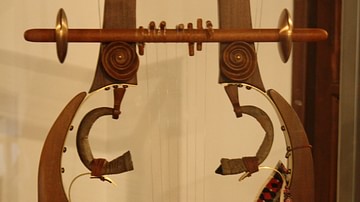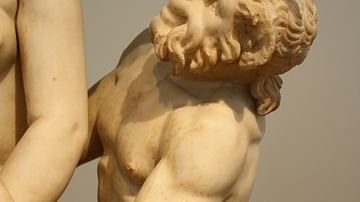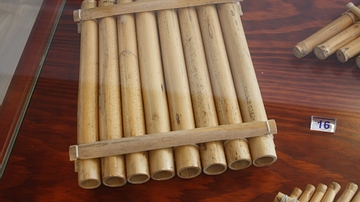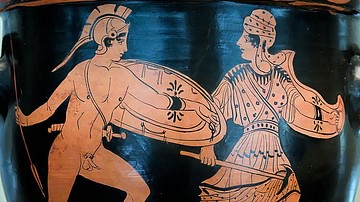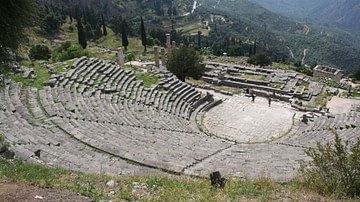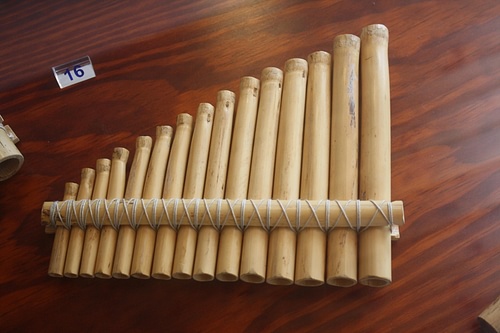
The Pan Flute or panpipes (syrinx) was a musical wind instrument first used by the ancient Greeks. Most commonly played by shepherds, the earliest use was in the Cycladic islands in the third millennium BCE, and representations of the instrument run right through the history of Greek art.
Although in some accounts the invention of the instrument was attributed to Cybele or Hermes, the deity most closely associated with the panpipes and widely credited with its invention was the pastoral god Pan. In Greek mythology, Pan, the patron of shepherds, fell in love with the Nymph Syrinx, daughter of Ladon the river-god. Fleeing his attentions, Syrinx pleaded with Zeus to save her and just when Pan captured her, Zeus turned the Nymph into reeds. Enraged, Pan smashed the reeds into pieces but on reflection he was struck with remorse and wept and kissed the broken reeds, all that remained of his beloved. As he kissed the reeds, he discovered that his breath could create sounds from them, and so he made the musical instrument that would carry the lost Nymph's name.
Panpipes were constructed from four to eighteen cane tubes (without any lateral holes) which were fastened together using cane, flax, or wax. Played by holding the instrument in both hands and blowing across the top end of each tube, different notes were produced with different lengths of tubes or by equal length tubes blocked at different points by wax. The sound produced was deep and rich.
The instrument is depicted both in sculpture, such as small marble Cycladic statues and clay figurines, and also on decorated ceramics, particularly red- and black-figure pottery from Attica. Representations of Pan, Hermes, Attis, Satyrs, and more rarely Eros (only in late Antiquity, 2-3rd century CE) often depict them playing the instrument.
